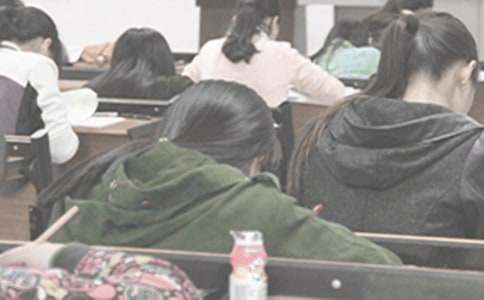- 相關推薦
思科認證網絡工程師CCNA無線認證考試要點
CCNA無線認證旨在認可工程師在支持無線局域網方面的重要作用,包括網絡工程師/管理員、無線支持專家和無線局域網項目經理。

考試說明
200-355 WIFUND 實施思科無線網絡基礎考試時間為90分鐘,涵蓋與CCNA無線認證相關的60-70道考題。200-355 WIFUND考試檢驗考生Radio Frequency(PF)及802.11等知識點,同時檢測考生是否具備安裝,配置,監控及基礎故障排除小型企業的無線網絡的能力。
考試要點
1.0 RF Fundamentals13%
1.1 Describe the propagation of radio waves
1.1.a Frequency, amplitude, phase, wavelength (characteristics)
1.1.b Absorption, reflection, diffraction, scattering, refraction, fading, free space path loss, multipath
1.2 Interpret RF signal measurements
1.2.a Signal strength (RSSI, Transmit power, receive sensitivity)
1.2.b Differentiate interference vs. noise
1.2.c Device capabilities (smartphones, laptops, tablets)
1.2.d Define SNR
1.3 Explain the principles of RF mathematics
1.3.a Compute dBm, mW, Law of 3s and 10s,
1.4 Describe Wi-Fi antenna characteristics
1.4.a Ability to read a radiation pattern chart
1.4.b Antenna types and uses
1.4.c dBi, dBd, EIRP
2.0 802.11 Technology Fundamentals13%
2.1 Describe basic Wi-Fi governance
2.1.a Describe regional regulatory bodies (such as, FCC / ETSI/ NTT)
2.1.b IEEE 802.11
2.1.c Wi-Fi Alliance
2.2 Describe usable channel and power combination
2.2.a Regional EIRP limitation examples
2.2.b ISM, UNII frequency bands
2.2.c Describe RRM fundamental(s)
2.3 Describe 802.11 fundamentals
2.3.a Modulation techniques
2.3.b Channel width
2.3.c MIMO / MU-MIMO
2.3.c (i) MRC
2.3.c (ii) Beam forming
2.3.c (iii) Spatial streams
2.3.d Wireless topologies
2.3.d (i) IBSS
2.3.d (ii) BSS
2.3.d (iii) ESS
2.3.e Frame types
2.3.e (i) Management
2.3.e (ii) Control
2.3.e (iii) Data
3.0 Implementing a Wireless Network16%
3.1 Describe the various Cisco wireless architectures
3.1.a Cloud
3.1.b Autonomous
3.1.c Split MAC
3.1.c (i) FlexConnect
3.1.c (ii) Centralized
3.1.c (iii) Converged
3.2 Describe physical infrastructure connections
3.2.a Wired infrastructures (AP, WLC, access/trunk ports, LAG)
3.3 Describe AP and WLC management access connections
3.3.a Management connections (Telnet, SSH, HTTP, HTTPS, console)
3.3.b IP addressing: IPv4 / IPv6
3.3.c Management via wireless
4.0 Operating a Wireless Network20%
4.1 Execute initial setup procedures Cisco wireless infrastructures
4.1.a Cloud
4.1.b Converged
4.1.c Centralized
4.1.d Autonomous
4.2 Describe the Cisco implementation of the CAPWAP discovery and join process
4.2.a DHCP
4.2.b DNS
4.2.c Master-controller
4.2.d Primary-secondary-tertiary
4.3 Distinguish different lightweight AP modes
4.4 Describe and configure the components of a wireless LAN access for client connectivity using GUI only
4.5 Identify wireless network and client management and configuration platform options
4.5.a Controller GUI and CLI
4.5.b Prime infrastructure
4.5.c Dashboard
4.5.d ISE
4.6 Maintain wireless network
4.6.a Perform controller configuration backups
4.6.b Perform code updates on controller, APs, and converged access switches
4.6.b (i) AireOS: boot loader (FUS), image
4.6.b (ii) IOS-XE: bundle, unbundle
4.6.b (iii) Autonomous
5.0 Configuration of Client Connectivity16%
5.1 Identify authentication mechanisms
5.1.a LDAP, RADIUS, local authentication, WebAuth, 802.1X,PSK
5.2 Configuring WLAN authentication mechanisms on the controller
5.2.a WebAuth, 802.1X, PSK
5.2.b TKIP deprecation
5.3 Configure client connectivity in different operating systems
5.3.a Android, MacOS, iOS, Windows
5.4 Describe roaming
5.4.a Layer 2 and Layer 3
5.4.b Intracontroller and intercontroller
5.4.c Centralized mobility
5.4.d Converged mobility
5.5 Describe wireless guest networking
5.5.a Anchor controller
5.5.b Foreign controller
6.0 Performing Client Connectivity Troubleshooting13%
6.1 Validating WLAN configuration settings at the infrastructure side
6.1.a Security settings
6.1.b SSID settings
6.2 Validating AP infrastructure settings
6.2.a Port level configuration
6.2.b Power source
6.2.c AP and antenna orientation and position
6.3 Validate client settings
6.3.a SSID
6.3.b Security
6.3.c Device driver version
6.4 Employ appropriate controller tools to assist troubleshooting
6.4.a GUI logs
6.4.b CLI show commands
6.4.c Monitor pages
6.4.c (i) CleanAir (controller GUI)
6.2 Identify appropriate third-party tools to assist troubleshooting
6.2.a OS-based Client utilities
6.2.b Wi-Fi scanners
6.2.c RF mapping tool
7.0 Site Survey Process9%
7.1 Describe site survey methodologies and their purpose
7.1.a Offsite (predictive / plan)
7.1.b Onsite
7.1.b (i) Predeployment (AP on a stick)
7.1.b (ii) Post deployment (validation)
7.2 Describe passive and active site surveys
7.3 Identify proper application of site survey tools
7.3.a Spectrum analyzer
7.3.b Site surveying software
7.4 Describe the requirements of client real-time and non-real-time applications
【思科認證網絡工程師CCNA無線認證考試要點】相關文章:
思科認證CCNA認證考試簡介06-08
ccna無線認證考試內容10-24
思科認證CUWSS考試要點08-02
思科認證CLDFND考試要點07-19
思科認證ARCH考試要點08-15
思科認證SIMOS考試要點09-06
思科認證CCNA認證試題中文版06-29
思科認證CCNA認證試題及答案中文版07-31
思科認證CCNA認證試題與答案中文版06-18